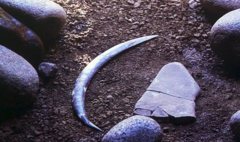Does the World's Oldest Boomerang Really Return?

The World’s Oldest Boomerang: A Glimpse into Early Human Ingenuity
Archaeological discoveries continuously reshape our understanding of human history, revealing insights into the lives of our ancient ancestors. One of the most fascinating recent finds is the world’s oldest boomerang, a discovery that has pushed the boundaries of how we perceive the technological and cultural capabilities of early Homo sapiens. This ancient tool, discovered in Poland, is not just a relic of the past; it symbolizes the ingenuity and skill of humans living over 40,000 years ago. In this article, we will explore this groundbreaking discovery, its implications for our understanding of prehistoric life, and the broader context of boomerang use across different cultures.
The Discovery of the Boomerang
Unearthed in Oblazowa Cave, located in southern Poland, the boomerang was initially believed to be about 30,000 years old when it was found in 1985. However, advancements in radiocarbon dating techniques have revealed a startling truth: the boomerang is actually between 39,000 and 42,000 years old. This discovery was made possible by dating not only the boomerang itself but also human and animal bones found in the same strata of the cave.
Dr. Sahra Talamo, a leading researcher from the University of Bologna, emphasized the significance of this find, stating, "It gives a remarkable insight into human behaviour." The boomerang, fashioned from mammoth tusk, showcases an astonishing level of craftsmanship, indicating that its creator possessed a deep understanding of aerodynamics and material properties.
The Craftsmanship Behind the Boomerang
What sets this boomerang apart is not just its age but the skill involved in its creation. Made from mammoth ivory, the tool exhibits intricate score marks, suggesting it was polished and carved with precision. Its design indicates that it would have flown effectively when thrown, although it was not designed to return to the thrower. This characteristic aligns with its likely use in hunting, showcasing the practical applications of early tools in human survival.
Researchers believe that the boomerang could have served multiple purposes beyond hunting. It may have had cultural or artistic significance, possibly playing a role in rituals or ceremonies conducted by early humans. The ability to create such a "perfect object" points to a sophisticated understanding of both the environment and the needs of the community.
The Broader Context of Boomerangs
While boomerangs are predominantly associated with the Aboriginal cultures of Australia, this recent finding in Poland opens up new conversations about the tool's historical significance across different continents. The oldest known boomerang in Australia dates back approximately 10,500 years and is crafted from wood. However, rock art depicting boomerangs in Australia suggests that these tools have been part of human culture for at least 20,000 years.
In Europe, the history of boomerangs is also rich. Notable findings include a wooden boomerang from Jutland, which is around 7,000 years old, and fragments of a 2,000-year-old oak boomerang found in The Netherlands, which is designed to return to the thrower. These discoveries indicate that the concept of the boomerang as a tool extended well beyond Australia, showcasing its global significance in human history.
Implications of the Discovery
The implications of discovering the world’s oldest boomerang are profound. It challenges existing narratives about the technological advancements of prehistoric humans and suggests that our ancestors were not merely surviving but innovating. The ability to craft tools with such sophistication indicates a high level of intelligence and adaptability.
This find also highlights the interconnectedness of ancient cultures. The similarities in boomerang design across different regions suggest that humans were sharing knowledge and techniques, possibly through migration or trade. This interconnectedness is a crucial aspect of understanding human evolution and cultural development.
Conclusion
The discovery of the world’s oldest boomerang in Poland not only makes a significant contribution to our understanding of prehistoric technology but also enriches our appreciation for the creativity and ingenuity of early humans. As we uncover more about the tools and artifacts left behind by our ancestors, we gain a clearer picture of their lives, their cultures, and their capabilities. This remarkable find serves as a reminder that human history is still being written and that each discovery can change our understanding of who we are and where we came from.
As we reflect on this extraordinary artifact, it’s worth considering how much more there is to learn about our ancient past. What other hidden stories lie beneath the surface, waiting to be uncovered? The history of humanity is a continuous journey, and each discovery propels us forward in understanding our shared heritage.
Frequently Asked Questions
What is the significance of the world’s oldest boomerang?
The significance lies in its age, craftsmanship, and the insights it provides into the technological capabilities and cultural practices of early Homo sapiens, dating back 40,000 years.
Where was the oldest boomerang found?
The oldest boomerang was discovered in Oblazowa Cave in southern Poland.
How was the age of the boomerang determined?
The age was determined through advanced radiocarbon dating of both the boomerang and associated human and animal bones found at the site.
Was the boomerang used for hunting?
Yes, the boomerang was likely used in hunting, but it may also have held cultural or artistic significance.
Are there other historical examples of boomerangs outside Australia?
Yes, there are various examples of boomerangs found in Europe, including a wooden boomerang from Jutland and fragments of a 2,000-year-old oak boomerang in The Netherlands.
In considering the ingenuity of our ancestors and the tools they crafted, one must ponder: what does this say about the human spirit and our relentless pursuit of innovation? #AncientHistory #Archaeology #HumanIngenuity
Published: 2025-06-26 00:21:13 | Category: world



